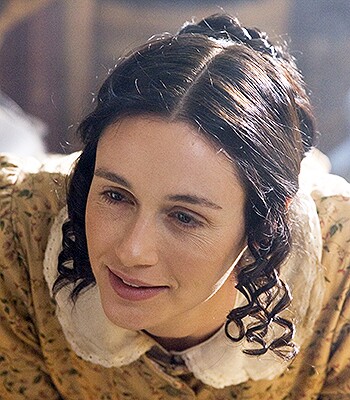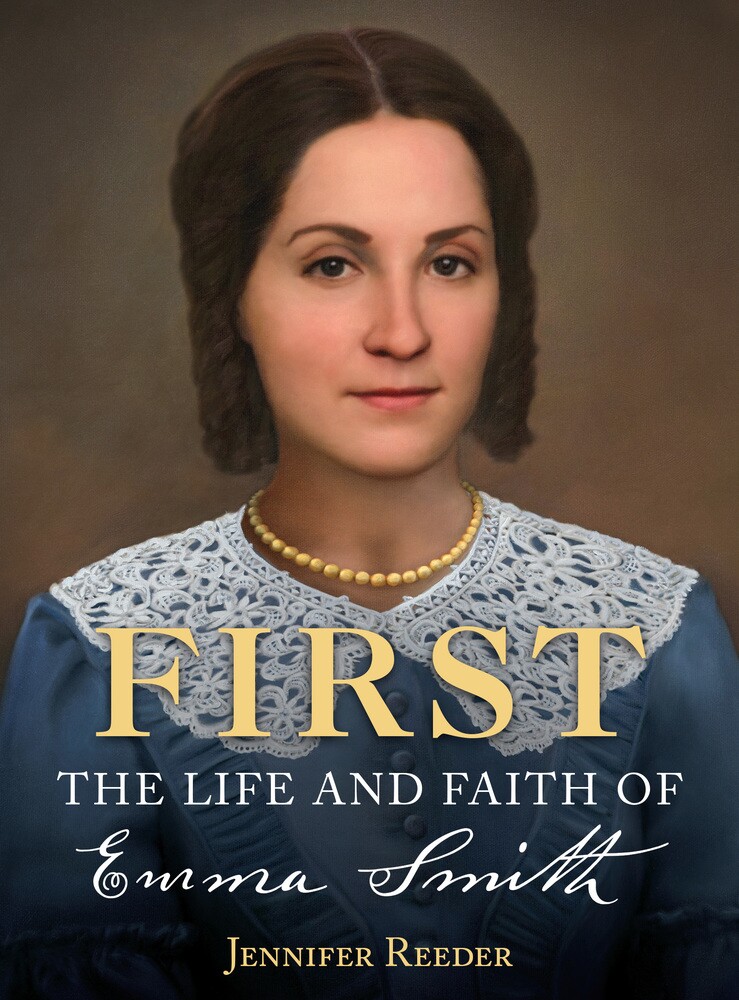
Editor's note: This article was originally published on LDSLiving.com in May 2022. Some of the questions and answers below have been edited for clarity.
Few people in the Church today have studied and understand Emma Hale Smith as well as Jenny Reeder. Reeder is the nineteenth-century women’s history specialist at the Church History Department for the Church of Jesus Christ of Latter-day Saints, and her book, First: The Life and Faith of Emma Smith, recounts Emma’s role, teachings, leadership, and pioneering faith in the early days of the Church.
In an interview on FromTheDesk.org, Jenny Reeder paints a beautiful picture of the indelible legacy of Emma Smith and the incredible and powerful impact her actions had on the Church—both in its early days and as it exists today. Here are a few of her most poignant answers.
What details about Emma’s life are you most excited to share with others?
So many things! I think I was most excited to really examine how involved Emma was in the Restoration—to give her credit for her contributions, whether that be with the Book of Mormon, or the hymns, or Relief Society, or the temple.
I think we all have a sense of that, but to know how deep those contributions are and what impact they have on the Church today. I see Emma as a very significant, multi-dimensional individual, both publicly and privately, and I was excited to share that part of her as well.
► You may also like: What I didn’t know: An open letter to Emma Smith
What made polygamy “Emma’s personal Abrahamic sacrifice”?
The revelation on plural marriage—Doctrine and Covenants 132—is interesting to me. It seems to have been written as a personal revelation to Joseph and Emma, and it wasn’t included in the printed publication until 1876 by Orson Hyde.
The references to Abraham are multiple—he is mentioned 20 times in this one revelation. The revelation turns from Joseph to Emma in verse 51, “to prove you all, as I did Abraham, and that I might require an offering at your hand, by covenant and sacrifice.”
In broader terms, an Abrahamic sacrifice refers to the things that are dearest or hardest to give. I think this is the case with Emma. Her marriage to Joseph was sacred and deeply personal.
Why did Emma stay in Nauvoo?
I think Emma’s life had been incredibly transient, from Harmony to Manchester to Fayette to Kirtland to Far West to Nauvoo, and the constant lodging in other family’s homes and loss of children certainly built up over time. She crossed a lot of frozen rivers and walked through a lot of mud. When the deed of the Mansion House and the Smith Homestead were in her name, she was not going to risk the safety and security she felt there to go into another unknown, led by a man who obviously did not have her best interest in hand. I think she became a sort of “mama bear” in digging her heels in and staying.
Are there contributions Emma made to the cause of the Restoration that you wish more people knew about?
Emma’s role as “elect lady” with the formation of the Relief Society under the direction of Joseph Smith is also extremely noteworthy.
I think we all know the story of the creation of the Relief Society in 1842 Nauvoo with Sarah Kimball, but do we recognize the value of the organization as a partner quorum of the priesthood, as an ancient organization that always existed on the earth when the priesthood was on the earth, and the connection between the Relief Society and the temple?
Do we today realize the female religious authority intended by Joseph Smith to reside in the Relief Society as an independent agent?
Do we understand the inherent power of sisterhood among women, in administering and healing, and in providing relief and saving souls?
This is a salvific sisterhood, and when men and women on a general and a local level understand this, we understand the role of Emma Smith in concert with her prophet husband. King and queen, priest and priestess, prophet and prophetess, president and presidentess, father and mother.
► You may also like: 5 powerful statements from Emma Smith that show the strength of Relief Society and sisterhood
What is the key to understanding Emma Smith?
The key to understanding Emma Smith is to recognize the complexity of her life. She was a real woman whose life was scarred by significant trials. She also recognized her role and she maintained it until it was too much after Joseph’s death.
They were a mighty partnership. He could not have received the plates or become a prophet without her. She is integral to Latter-day Saint heritage today, in so many different groups and break-offs. She is a mother to all of them.
Read more about Jenny’s insights into Emma’s contributions to the coming forth of the Book of Mormon, her atypical marriage and relationship with the Prophet Joseph Smith, and the Church-wide resurgence of love and respect for Emma in her full interview on FromTheDesk.org.
You can also listen to Jenny Reeder share more insights on Emma’s life and legacy on the All In podcast in the player below.
► You may also like: 9 things you didn’t know about Emma Smith


